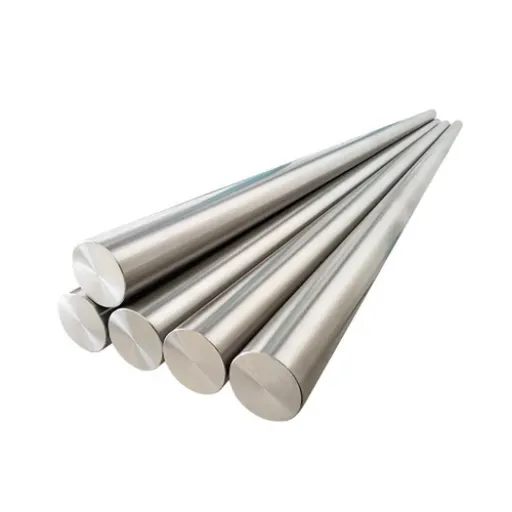Because of their unmatched strength, resistance to corrosion, and durability, stainless steel alloys are essential in industry. The two often used stainless steel grades are 308 and 316. Both have specific applications and environments in which they are used. This article compares 308 and 316 stainless steel with in-depth details on chemical compositions, mechanical properties, and advantages of each separately. This way, learners will understand how to select the appropriate grade for industrial, commercial, or architectural applications. When the materials for welding, marine works, or fabrication are required, this guide will aid in achieving the best results in performance and economy.
What is 308 Stainless Steel?
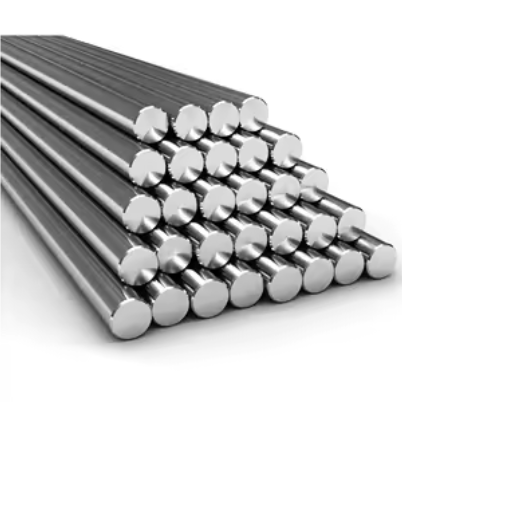
308 stainless steel is an austenitic stainless steel alloy whose principal constituents are iron, chromium, and nickel. The chromium content usually varies from 18-20%, while the nickel content varies from 8%- 10%. The most outstanding property is its corrosion resistance, followed by great tensile strength and great weldability, which makes it always a first choice for welding, especially when welding 304 stainless steel. The alloy has also proved useful in industry for moderate heat and chemical exposure.
Characteristics of 308 Stainless
This stainless steel’s composition consists of approximately 20% chromium and 10% nickel, which makes it highly corrosive to various atmosphere conditions, from chemical exposure to moderate temperatures. 308 stainless steel is an austenitic alloy primarily used during the welding of austenitic stainless steels like 304 and 304L. This alloy is highly cost-effective due to its outstanding mechanical properties and strong ductility. Furthermore, the weldability of this alloy is unmatched due to the strength and ductility it preserves while being welded, making it an economically advantageous option for projects that need strong and durable joints.
Applications and Uses of 308 Stainless Steel
308 stainless steel is often utilized where advanced corrosion resistance, mechanical strength, and thermal stability are needed. Its primary use is in several welding processes, especially in welding of austenitic steels like 304 and 304L grades. Because of its remarkable corrosion resistance, it is also used in chemical processing, along with the food and petrochemical industries.
Key Applications Include:
- Welding Filler Material: It is highly utilized for stainless steel component assemblies to achieve the best combination of toughness and corrosion-resistant properties.
- Pressure Vessels and tanks are best suited for areas that require mitigation of oxidation and stress corrosion cracking, especially when they are exposed to chemicals.
- Exhaust systems and heat exchangers: They can be used in applications that have thermal cycling, with the materials maintaining a moderate heat of 870 Degrees Celsius or 1600 Degrees Fahrenheit.
- Food Processing Equipment helps maintain hygienic standards by preventing oxidation or contamination from acid or corrosive food materials over a long period of time.
- Architectural structures: It can be applied in regions where there is a prolonged risk of moisture and superior weather resistance properties are mandatory.
Specifications:
- Yield Strength (0.2% Proof): 206 MPa (30,000 psi)
- Tensile Strength: 515 MPa (74,000 psi)
- Elongation at Break: ~40%
- Operating Temperature Range (Corrosion Resistance): -200 C to 870 C (-328 F to 1600 F)
These parameters distinguish the steel’s appealing mechanical properties and versatility for numerous industrial applications.
Welding with 308 Filler Material
In my experience, I have learned a few practices that guarantee the best results when welding with 308 filler material. Because this filler is intended to join austenitic stainless steels like 304 and 304L, it provides outstanding mechanical strength while corroding quickly. Restricting heat input during welding will help minimize distortion and the risk of carbide precipitation that can weaken the weld. The selection of shielding gas also should be considered. A mixture of argon with small percentages of CO₂ or O₂ compliments arc stability and produces a cleaner finish. These adjustments guarantee strong and reliable welds even in the most challenging conditions.
Understanding 316 Stainless Steel
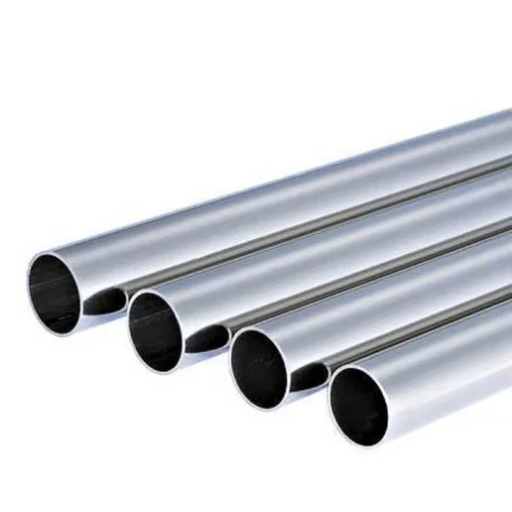
316 stainless steel, an austenitic alloy, has the best corrosion resistance, especially in environments with many chlorides or other hostile chemicals. This is mainly due to adding molybdenum, which improves pitting and crevice corrosion resistance compared to 304 stainless steel. In addition to these benefits, 316 stainless steel has good mechanical properties and high-temperature strength, making it beneficial to the marine, pharmaceutical, and chemical processing industries. The alloy has good weldability; however, special precautions such as low thermal inputs and proper filler materials like 316L must be tempered to prevent sensitization and structural loss.
Key Features of 316 Stainless
- Corrosion Resistance: 316 stainless steel’s corrosion resistance is unmatched due to the addition of molybdenum, which allows it to withstand pitting and even crevice corrosion in environments with high chloride levels.
- High Strength and Durability: This alloy’s mechanical properties are excellent, and it retains its strength at elevated temperatures, making it highly reliable for tough industrial applications.
- Versatility in Applications: Used extensively in the marine industry, 316 stainless steel is broadly utilized in the pharmaceutical and chemical processing industries, enabling it to function under rigorous conditions while maintaining effectiveness.
- Ease of Fabrication: 316 stainless steel is effortless to weld and can be used in various manufacturing processes. However, using appropriate filler materials like 316L is vital so that sensitization does not occur and stability is maintained over the long term.
- Hygienic Properties: Ideal for use in food processing and medical equipment, its corrosion resistance combined with a smooth surface finish allow for the maintenance of highly sanitary standards.
- Long Service Life: 316 stainless steel’s improved attributes make it a durable material, which in turn decreases the frequency of maintenance or replacements needed.
Common Uses for 316 Stainless Steel
This alloy is used commonly across many industries due to its excellent corrosion resistance, resiliency, and hygienic characteristics. In marine fields, it is used for boat fittings and onshore and offshore hardware, as it can withstand chloride pitting. It is also used in coastal architecture. In food and beverage, this alloy is used in tanks, pipes, and other appliances that use cleanable, sanitary surfaces. The medical field uses it to make surgical instruments and implants because of the alloy’s biocompatibility and resistance to many bodily fluids.
Technical Parameters:
- Corrosion Resistance: Excellent, with a Pitting Resistance Equivalent Number (PREN) typically between 22 and 28.
- Tensile Strength: Roughly around 515 MPa (75,000 psi)
- Yield strength: Approximately 205 MPa (30,000 psi)
- Operating Temperature: Effective long-term up to 870°C (1,598°F) with some intermittent use being effective to 925°C (1,697°F).
- Density: 8 g/cm³
All of these characteristics make 316 stainless steel the go-to choice for strenuous applications where remarkable strength, hygiene, and extreme conditions are required.
Differences Between 316 and 316L
The 316 and 316L alloys mainly differ in terms of carbon content. 316L has a lower carbon percentage than 316 (maximum of 0.03%), which reduces the chances of carbide precipitation during welding. This makes 316L more appropriate for highly welded parts where corrosion resistance need not be compromised. Although both alloys have comparable mechanical properties, 316L with lower carbon content is better for intergranular corrosion when subjected to higher temperatures. This makes 316L the alloy of choice in more sensitive environments, such as chemical processing or marine industries.
Comparing the Chemical Composition of 308 and 316
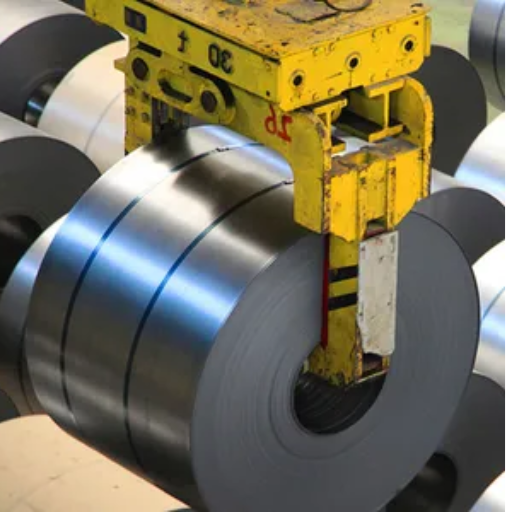
The chemical constitution is what sets apart 308 and 316 stainless steel. Regarding chromium and nickel content, Type 308 has more of both (18-20% and 10-12%, respectively) than 316, which gives it good oxidation and corrosion resistance in milder environments. On the other hand, 316 stainless steel does include molybdenum (2-3%), which significantly increases its resistance to pitting and crevice corrosion, especially in chloride-contaminated areas. Because of that, 316 is more durable for marine operations or chemical territories subject to severe conditions. In addition, 316 is known to outperform 308 in ultimate tensile strength and endurance in severe conditions, making it suitable for many applications.
Nickel and Chromium Content
Through my investigation across 308 and 316 stainless steel, it becomes evident that the distinction in nickel and chromium content differs between other types of steel. Type 308 is estimated to have 18-20% chromium and 10-12% nickel, which provides substantial corrosion resistance for standard applications. On the other hand, Type 316 still maintains the same chromium content but increases nickel concentration to 10-14% while adding molybdenum. This enables it to withstand more aggressive environments, such as marine and chemical exposure. Both grades utilize their composition efficiently, but adding molybdenum to 316 makes it possible to withstand higher levels of corrosive environments.
Impact on Corrosion Resistance
With the addition of molybdenum, Type 316 stainless steel significantly enhances corrosion resistance in chloride environments, which encourages pitting and crevice corrosion. This enables use in harsher applications like marine equipment, chemical processing, or medical devices. In contrast, Type 308 stainless steel does not include molybdenum and is more prone to localized corrosion, making it better suited for less demanding environments.
Key Technical Parameters:
- Type 308 Stainless Steel:
- Chromium content: 18-20%
- Nickel content: 10-12%
- Pitting resistance equivalent (PREN): ~19-21 (approximate)
- Type 316 Stainless Steel:
- Chromium content: 16-18%
- Nickel content: 10-14%
- Molybdenum content: 2-3%
- Pitting resistance equivalent (PREN): ~24-26 (approximate)
These values for 316, compared with Type 316 Molten Solder, indicate its increased performance in environments with chlorides or acidic materials. The PREN value, in particular, demonstrates retention of pitting corrosion resistance, which is a major concern for material selection in severe conditions.
Examining the Mechanical Properties
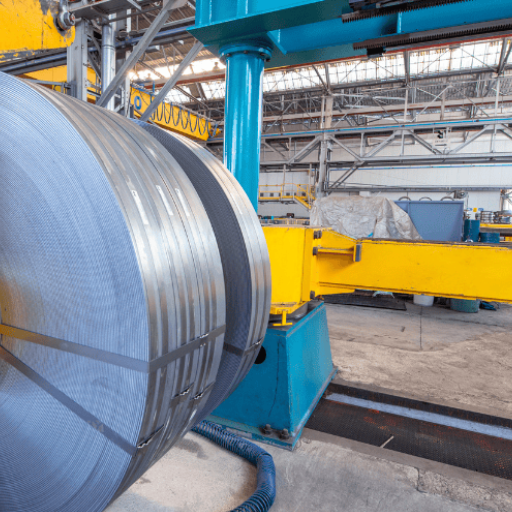
In evaluating the mechanical properties of Type 308 and Type 316 Stainless steels, tensile strength, yield strength, and elongation are of interest, as these relate to their performance in a mechanical environment.
- Type 308 stainless steel features:
- Tensile Strength: 75 ksi (515 MPa)
- Yield Strength: 30 ksi (205 MPa)
- Elongation at Break: ~40-50%
- Type 316 stainless steel features
- Tensile Strength: 80 ksi (550 MPa)
- Yield Strength: 35 ksi (240 MPa)
- Elongation at Break: ~40-50%
Both materials seem to have the same magnitude of elongation, but Type 316 has higher tensile and yield strengths; thus, it is preferred in cases where the mechanical load is higher. Furthermore, Type 316’s more excellent toughness is due to increased molybdenum content, which allows for more excellent serviceability under stress for long periods in harsh conditions. These differences highlight the importance of selecting the right material for the mechanical requirements and the environmental parameters of use.
Strength and Durability
While analyzing materials like Type 304 and Type 316 stainless steel, the two main deciding factors include their physical attributes and how suitable the environment is for them. Both materials offer exceptional ductility and strength, with 40-50% elongation at break, which guarantees excellent forming and shaping capabilities. Compared to Type 304, Type 316 is better in tensile strength (roughly 80 ksi) and yield strength (around 35 ksi), making it ideal for high-load applications. Molybdenum constituents also enhance its resistance to pitting and corrosion from harsh environments, especially those with chlorides or marine exposure. Ultimately, the decision should consider the system’s mechanical needs and the corrosive operating condition to ensure the material’s durability and reliability over time.
Thermal Properties of Each Alloy
A comparison of Type 304’s and 316’s stainless steel thermal properties reveals that both have considerable similarities regarding their austenitic structure. However, interesting differences emerge. At 100 degrees celcius, the thermal conductivity of Type 304 is about 16.2 W/m·K, while Type 316 is lower at around 14.6 W/m·K, making Type 304 more effective at conducting heat. Both alloys have a specific heat capacity of 500 J/kg·K, allowing for comparable heat retention. Regarding thermal expansion, both types expand between 16.0-17.0 µm/m · K in the 0-100 degrees Celsius temperature range, which is especially important in applications with temperature cycling. Type 304 melts at a range of approximately 1400-1450 degrees Celsius. Type 316 typically melts at the same range, but its added molybdenum could affect its thermal stability under extreme temperatures. These comparisons further prove their viability in different thermal environments, with the deciding factor being the specific application requirements for elevated corrosion resistance, which would favor Type 316, or higher thermal conductivity, which would favor Type 304.
Corrosion Resistance: 308 vs 316
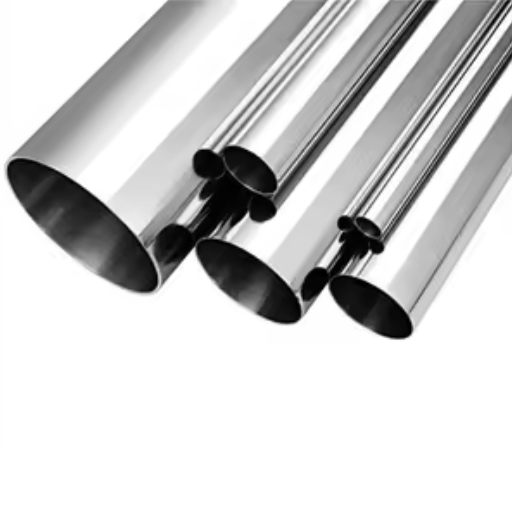
Upon analyzing the durability of molybdenum-containing metals Type 308 and Type 316, it is evident that Type 316 is much more adept at withstanding harsh environments due to its higher molybdenum content than Type 308, typically ~2-3% in 316. This allows for excellent resistance to pitting and crevice corrosion in environments localized with Chloride ions, such as marine or industrial applications. While Type 308 is still corrosion resistant to lesser degrees, it is better suited for welding applications than environments with hostile chemicals.
Key Technical Parameters:
- Chloride Pitting Resistance Equivalent Number (PREN):
- Type 316: PREN ~24-26 (increased from 308 due to added molybdenum).
- Type 308: PREN ~19-21.
- Oxidation Resistance Temperature:
- Type 316: Adequate performance up to ~870°C in continuous service.
- Type 308: Similar, but tailored for welding operations.
- Applications:
- Type 316 is ideal for harmful exposure to saltwater, chemical processing plants, and medical devices.
- Type 308 is more commonplace when joining stainless steels of less corrosive environments.
In the end, the determination lies in which parameters are deemed most important; if corrosion resistance is one of them, then Type 316 would be the most suitable.
How Does 308 Stand Up to Corrosion?
Type 308 stainless steel can be an appropriate filler material for welding, but it provides minimal protection against corrosion. Its corrosion resistance is moderate at best, particularly in mildly acidic or neutral conditions. When compared against Type 316, Type 308 lacks resistance to chloride-induced pitting or crevice corrosion. This is because, unlike Type 316, Type 308 lacks molybdenum, increasing localized corrosion resistance.
Technical Constraints:
- Chloride Resistance:
Type 308 is frequently found in welded or jointed structures exposed to chloride-rich conditions such as seawater or deicing salts. Its attachment makes it more susceptible to crevice and pitting corrosion than Type 316.
- Operating Conditions and Resistance:
Type 308 scales well with increasing temperature, maintaining efficiency until around 870°C. This steel is not commonly used alone, as the composition is better suited for welding with other stainless steels rather than being used independently.
- Corrosion in Acidic Environments:
Type 308 gives favorable results with low concentrations of hydrochloric and sulfuric acid. However, the results become more damaging as the environment’s acidity increases.
Molybdenum’s type 316 corrosion resistance makes it ideal for applications that are exposed to chlorides, salt water, or harsh chemicals.
Why 316 Offers Superior Corrosion Resistance
The molybdenum content in Type 316 stainless steel enables it to resist pitting and crevice corrosion in chloride-rich environments. As a result, it has superior corrosion resistance, making it ideal for marine projects and industries dealing with chemical exposure. Type 316 also sustains stability under high temperatures and consistently performs in the presence of high sulfuric or hydrochloric acid. Its structural integrity surpasses Type 308, which makes it unfavorable for those harsh conditions, thus underscoring the preference for Type 316 in demanding and corrosive applications.
References
- Difference Between 316 & 308 Stainless Steel – Sciencing
- 316, 304, 308 Stainless: What’s the Difference? – Chainmaillers
- 308 vs 316 Stainless Steel: What’s the Difference? – MFG Shop
Frequently Asked Questions (FAQ)
Q: What is the main difference between 308 and 316 stainless steel?
A: Their alloy composition is the primary difference between 308 and 316 stainless steel. 316 stainless steel contains molybdenum, which provides excellent corrosion resistance, especially in chloride environments. 308 stainless steel does not contain molybdenum and is often used for general-purpose applications.
Q: Can I use 308 filler metal to weld 316 stainless steel?
A: It is possible to weld 316 with 308 filler metal, but it’s essential to use 316 filler for optimal corrosion resistance and mechanical properties. Using 308 filler may result in a weld with slightly lower corrosion resistance.
Q: How does the nickel content differ between 308 and 316 stainless steel?
A: 316 stainless steel typically has a slightly higher nickel content than 308 stainless steel, which contributes to its improved corrosion resistance and overall durability.
Q: Why is molybdenum added to 316 stainless steel?
A: Molybdenum is added to 316 stainless steel to enhance its corrosion resistance, particularly against chlorides and other industrial solvents. This makes 316 stainless steel a better choice for marine and chemical processing environments.
Q: Is 308 stainless steel suitable for welding stainless steel like 304?
A: Yes, 308 stainless steel is commonly used for welding 304 stainless steel. It provides good corrosion resistance and strength, making it a suitable filler metal for 304 stainless steel applications.
Q: What are the applications of 308 stainless steel compared to 316 stainless steel?
A: 308 stainless steel is typically used for welding applications involving 300 series austenitic stainless steels, like 304 and 304L. 316 stainless steel, with its added molybdenum, is used in more demanding environments such as marine and chemical processing industries.
Q: How does the higher chromium content in 316 stainless steel benefit its use?
A: 316 stainless steel’s higher chromium content enhances its ability to resist oxidation and corrosion, making it more durable in harsh environments than 308 stainless steel.
Q: Can I use 316 stainless steel for general-purpose applications instead of 308?
A: While 316 stainless steel can be used for general-purpose applications, it is typically more expensive than 308 stainless steel. If the application does not involve harsh environments, 308 stainless steel may be more cost-effective.
Q: What does “AISI” mean in AISI 308 and AISI 316 stainless steel?
A: “AISI” stands for the American Iron and Steel Institute, which provides standards for steel grades. AISI 308 and AISI 316 refer to specific grades of stainless steel within the 300 series, with defined chemical compositions and properties.

